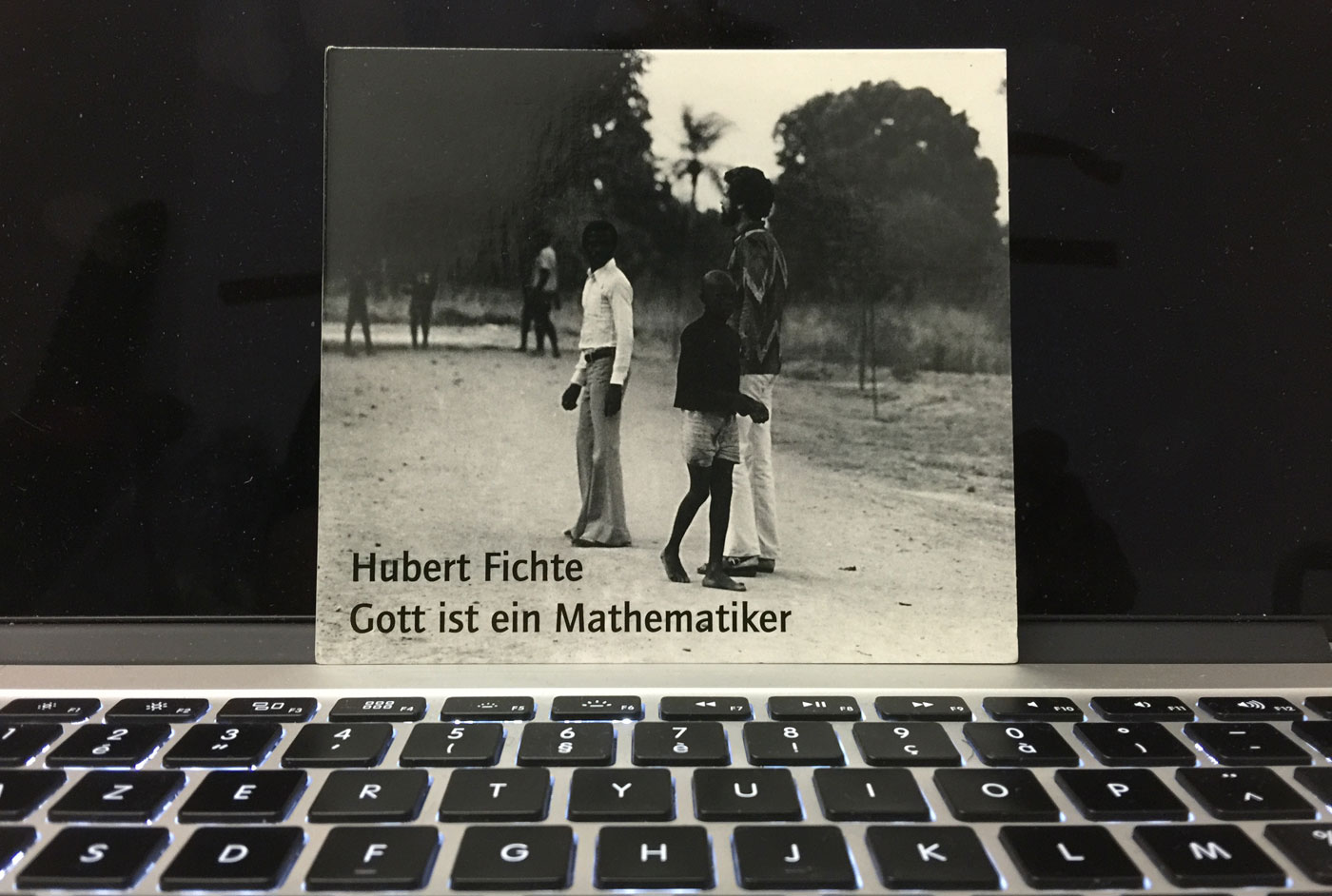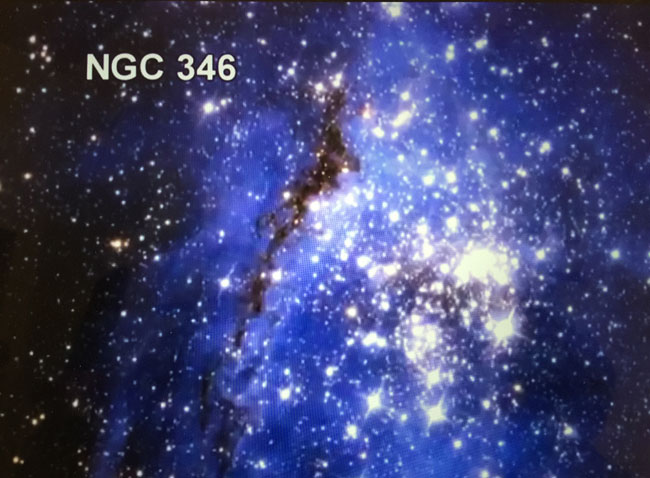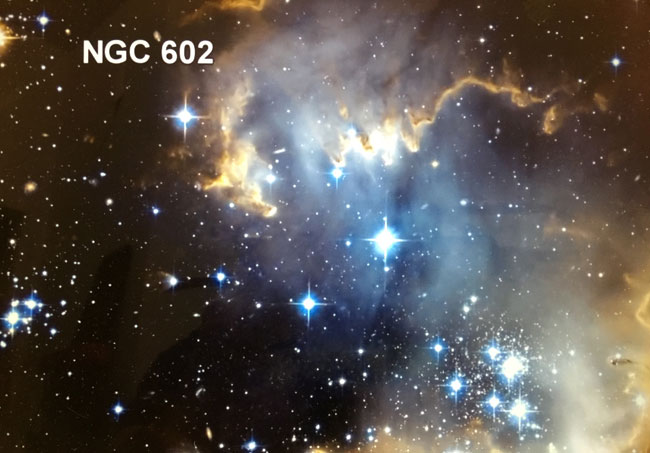— The Loop

How could they have known? How could they have known about the “white dwarf” Sirius B—which they named “the companion of Sigui Tolo”—and its sixty-year revolutionary cycle, when the small star could only be observed through telescopes for the first time at the end of the nineteenth century?
From the concept of the infinitely large in Mesopotamian sciences to the concept of the infinitely small in the works of ancient Greeks, such as those by Democritus, the common denominator of all these civilizations is without a doubt the fact that their logical sciences did not exclude intuitive imagination.
On the altar of human knowledge, on each side of which stand sciences and arts, mathematics and arts are opposites. I am referring here to artistic creation in its endless and unexpected aspect: the perpetual and illogical movement that determines its development. A biological, physical, or historical phenomenon can be explained, but it is impossible to write the equation that would explain why the human mind has always sought, and will always seek, to enhance perception and emotion. Metaphorical formulas can be developed, but what endlessly changes the nature and purpose of art can never be logically explained and anticipated, as it belongs to parameters that cannot be observed a priori. Even if unsolved equations do also exist, it is impossible to build a mathematic reasoning to structure the unstructurable that leads to the unexpected, where neither causality nor effects are understandable.

It is always surprising to see in Wolfgang Amadeus Mozart’s scores that there is no trace of marks or redactions. Emotion results from an unexpected juxtaposition of cognitive functions that, when gathered together in a certain moment and space, can activate the senses. This kind of bio-communication system can be mathematically interpreted, but the emotions generated from new shapes and concepts cannot be reduced to rational explanation.
What is important about Mozart’s scores isn’t so much the contrast between the virtuosic purity of the work and the “humanity” of making mistakes by nature, but rather that, in order for music to emerge from a human mind as already complete, the entire mathematical structure of the music must have existed beforehand—even before Mozart himself existed. Like mathematics, music is not invented, but discovered—Mozart would not invent a symphony, but would discover one that already existed somewhere, and would organize it in his mind over the course of a month or a year. Einstein discovered the theory of relativity, Higgs the boson particle. They didn’t invent them. Relativity and bosons existed already, and were waiting to be discovered.
Music’s structure can indeed be explained with mathematics, but what cannot be explained is the irrational origin of the urge that triggers the process through which it will move in a certain direction and then renew itself indefinitely. What is a masterpiece if not a mysterious coincidence, an immeasurable quantity of totally unexpected and paradoxical circumstances merging into a particular moment and space: point T? This phenomenon, rare in any artistic discipline, holds in itself the enigma of its unexpected and extra-human origin, making it endlessly fascinating. Among the billions of factors converging upon this one point, only one is fundamental: the factor of repair, or restoration. Why? Because repair translates from one space/time to another, and crucially as an improvement.
The omnipresence of repair in the universe is without a doubt the sole reason it is shared by both mathematics and art. It is a primary characteristic of human biological and cultural evolution. Without the process of repair, there would be nothing—neither chaos nor stability. Everything is guided by the determinist agency of repair.
I first perceived this phenomenon quite concretely through simple observation in the cultural and political fields and through many years of research on non-occidental tradition and occidental modernity. This led me to reconsider the totemic dimension of traditional cultures and their connections to the immaterial worlds of ancestors. I likewise reconsidered the cultures of modernity and their dogmatic connection with modernity’s motor: progress, which turns its back on the past, toward an ambivalent relation between the artistic avant-garde and the wars of the world.
Charles Darwin and Alfred Russel Wallace’s theory of the evolution of species, which articulated the natural selection necessary for any species to survive in its environment through a process of repair, helped my research to go beyond the concept of the “bricolage” of the savage mind so dear to Claude Lévi-Strauss. A discovery by the 2012 Nobel Prize in physics winner, Serge Haroche, opened my eyes to other horizons where repair is omnipresent: after trying for years to trap an elementary light particle between two mirrors, Haroche and his team could only capture the photon for a tenth of a second. After a tenth of a second, the photon disappears. Where does it go? No one knows. Why does it disappear? “Because nature isn’t perfect,” said Haroche. These two words together tackle a fascinating fundamental issue: the relationship between nature and imperfection.
Is that which the human mind misses or mistakes also imperfect? Is that which culture does not understand also imperfect? Extra-human phenomena belong to an order of things that surpasses us only to then tirelessly reappropriate what belongs to it, repairing a situation that, for a brief moment, suspends its power. This is because the human’s “imperfect” interpretation of nature has a virtual symmetry from nature’s point of view: the abnormality triggered by this experience. Therefore, from the perspective of the quantum order of things, it is this experience that is imperfect. Assuming the photon is as isolated as the abnormality, the quantum order of things repairs this fault by taking the particle back after a tenth of a second.

There are different explanations for this wave’s disappearance from our world, but what is certain is that, in order to reappear and be pieced together again somewhere else, the information that defines it must be stored somewhere. In the universe, black holes are the only known phenomena capable of making anything disappear completely, from matter to light, and their mass depends on the quantity of matter they swallow. But black holes are invisible to the naked eye; they can only be identified through the gravitational influence they exert over their environment (as astrophysicist Andrea Ghez recently observed with the Sagittarius A black hole at the center of our galaxy) or through a “mathematical journey” that makes it possible to approach its periphery, and ultimately its center: its singularity.
According to physicist Leonard Susskind, theoretician Stephen Hawking claimed in 1976 that black holes violate the fundamental principle in physics of the storage of information, because of the process of evaporation that leads to their progressive disappearance. “Hawking radiation” describes the process by which this information evaporates, leading to the progressive disappearance of the black hole. And yet, says Susskind, we should compare this with the concrete example of a computer, because the information stored in its hard drive can be erased, while in reality it is only released into the atmosphere as a quantity of energy absorbed by the molecules around it. This is to say that the information hasn’t totally disappeared. According to Susskind:
This is a fundamental law of quantum physics, and perhaps even the most important law of classical physics as well. From Susskind’s “holographic principle” we now know that when a black hole swallows an object, it keeps the information that defines the object at its surface, or its event horizon. Susskind’s holographic principle gets its name from a process through which an image in three dimensions is built from details coded into a two-dimensional film. Similarly, the holographic principle stipulates that the horizon of a black hole contains the totality of the information included inside. The information contained in a black hole isn’t lost forever, but is rather coded on the surface of its horizon as data. As Susskind further explains:
The horizon would then keep all information borne by all the elements that gave birth to the black hole, but also of all the objects that, attracted by the force of gravity, have gone through the horizon. They would then be returned through photons produced during the evaporation process. Information associated to black holes would then be rejected in the Universe, even if in a blurred form. From then on, they should not be seen as devourers, but as some kind of information tanks.
Because of the accelerating circular movement on the black hole’s event horizon, a disk of accretion forms that works like a dynamo: the more it swallows, the more it turns, and the more it turns, the more it rejects energy. As a black hole attracts more matter, it rejects more of its elementary information. Try, for instance, filling a dog’s bowl using a fire hose. A huge quantity of water will spill out. The acceleration of the event horizon generates a massive and powerful electromagnetic loop that creates, on both sides of the black hole, two gigantic jets of gamma rays, together with electromagnetic eruptions and rejected gas.
What for decades seemed destructive is now clearly recognized by every astrophysicist as creative. Even Hawking admitted he made a mistake. Through Susskind’s theories and the phenomenon of rejection, it is now clear that black holes contribute to the formation of new stars and galaxies. This intermediary cataclysmic phenomenon in fact leads to a cosmic act of creation. It illustrates, at an extraordinary physical scale, a fundamental principle of creation: repair. From the death of a massive star exploding into a supernova, new stars are born.
Repair in the cultural sense of the word can apply to politics, the economy, art, and science, but it is above all on the continuum of extra-cultural activity. What we claim to control, for instance by gathering information with the intention of reusing it, is purely an imitation of fundamental physical phenomena structuring an order of things that precedes and will succeed us as well.
“Nothing is lost, nothing is created, everything transforms,” wrote chemist Antoine-Laurent de Lavoisier. It is not the universe that is a gigantic computer, but we who mimic it. The universe appears to us now as a gigantic fractal vortex swallowing itself and endlessly regenerating.
×
All images courtesy of the artist.


